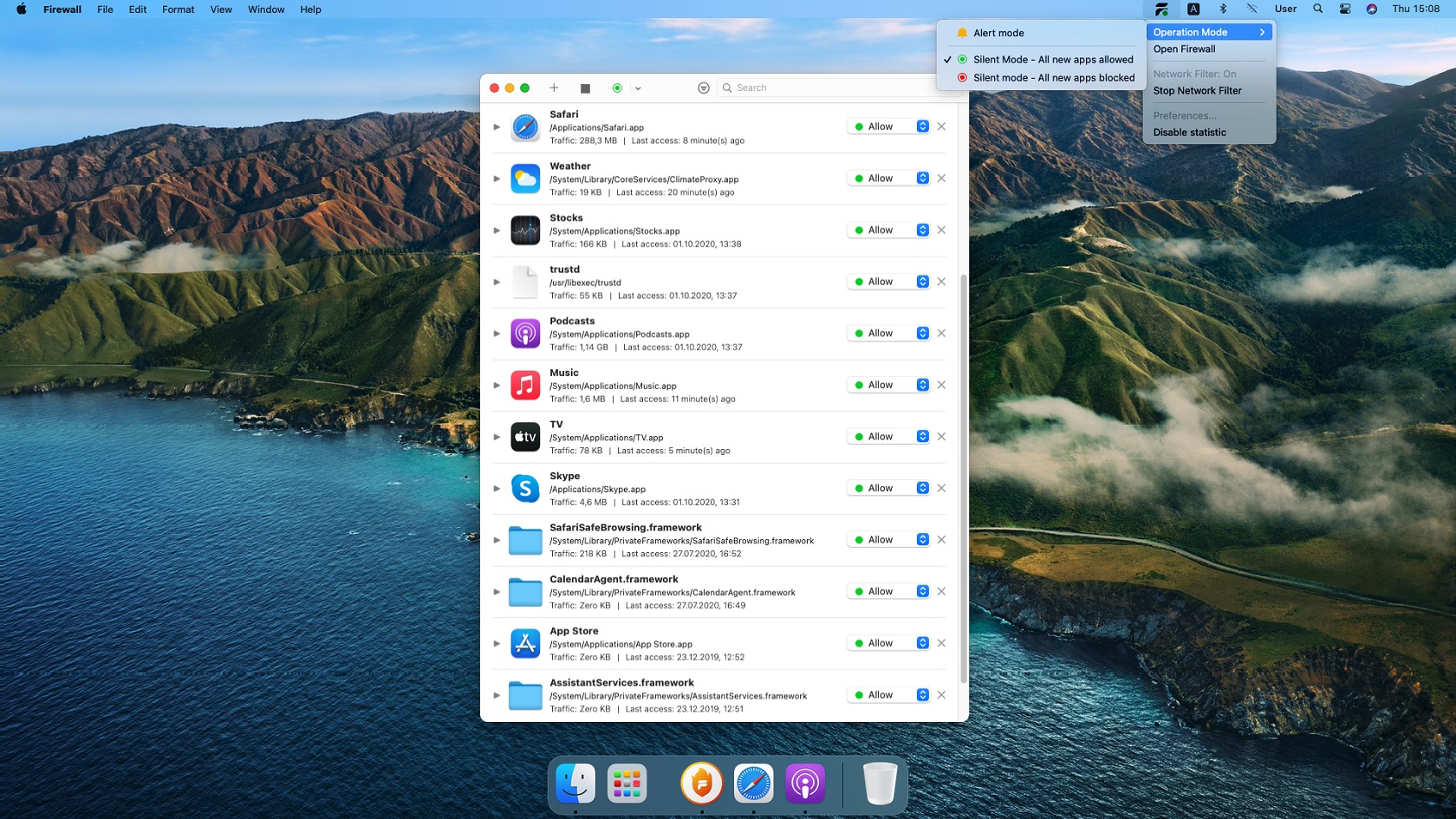Ever wondered how to use RemoteIoT behind a firewall on your Mac without pulling your hair out? Well, you're in the right place! If you're someone who's been struggling to connect to IoT devices through a firewall, this guide is your golden ticket. We’re diving deep into the world of RemoteIoT, firewalls, and Mac-specific solutions so you can get your setup running like a champ.
Imagine this: you're working on a project that requires remote access to IoT devices, but your network has a firewall standing in the way. It's like trying to sneak into a VIP party without an invitation. Frustrating, right? Don’t worry; we’ve got your back. In this article, we’ll break down everything you need to know about using RemoteIoT behind a firewall on your Mac.
Our goal is simple: to make you an expert at navigating firewalls and setting up RemoteIoT like a pro. Whether you’re a beginner or a seasoned techie, this guide will walk you through step-by-step processes, tips, and tricks to ensure smooth sailing. So, grab a cup of coffee, sit back, and let’s get started!
Read also:5movierulz 2024 Ndash Download Now For Your Ultimate Movie Experience
Understanding the Basics: What is RemoteIoT?
Before we dive into the nitty-gritty of using RemoteIoT behind a firewall, let’s first clarify what RemoteIoT is. Think of it as a bridge that connects your devices over the internet, even when they’re miles apart. RemoteIoT allows you to monitor, control, and interact with IoT devices from anywhere, making it a game-changer for remote work, smart homes, and industrial automation.
Here are some key features of RemoteIoT:
- Secure communication between devices
- Easy integration with existing systems
- Support for multiple protocols
- Scalability for large-scale deployments
Now that you know what RemoteIoT is, let’s move on to the big question: how can you use it behind a firewall on your Mac?
Why Firewalls Are a Big Deal
Firewalls are like the bouncers of the internet world. They protect your network by blocking unauthorized access and ensuring only trusted traffic gets through. While this is great for security, it can sometimes make things tricky when you’re trying to access external services like RemoteIoT.
Here’s why firewalls matter:
- They enhance network security by filtering out malicious traffic
- They control incoming and outgoing connections
- They can block specific ports and protocols
When you’re working with IoT devices, firewalls can become a hurdle, especially if they’re configured to block certain types of traffic. But fear not! We’ve got solutions that’ll help you bypass these restrictions seamlessly.
Read also:Unlock The Fun Why Slope Unblocked 76 Is The Ultimate Game For Adventure Seekers
How to Use RemoteIoT Behind a Firewall on Mac
Now comes the exciting part: learning how to use RemoteIoT behind a firewall on your Mac. Follow these steps carefully, and you’ll be up and running in no time.
Step 1: Check Your Firewall Configuration
The first thing you need to do is understand how your firewall is set up. Are you using macOS’s built-in firewall, or is it a third-party solution? Once you know this, you can adjust the settings accordingly.
Tip: If you’re using macOS’s firewall, head to System Preferences > Security & Privacy > Firewall to manage settings.
Step 2: Identify Required Ports and Protocols
RemoteIoT typically uses specific ports and protocols to communicate with devices. Make sure these are allowed through your firewall. Common ports include:
- Port 80 (HTTP)
- Port 443 (HTTPS)
- Port 1883 (MQTT)
- Port 8883 (MQTTS)
If your firewall blocks these ports, you’ll need to configure it to allow them.
Step 3: Use Port Forwarding
Port forwarding is a powerful technique that allows you to direct traffic from one port to another. This is especially useful if your firewall blocks certain ports. Here’s how you can set it up:
- Access your router’s admin panel
- Locate the port forwarding section
- Set up rules to forward the required ports to your Mac
Voilà! You’ve just created a pathway for RemoteIoT to communicate through your firewall.
Alternative Solutions: Tunneling and Proxies
If configuring your firewall seems too complicated, there are alternative methods you can try. Two popular options are tunneling and proxies.
SSH Tunneling
SSH tunneling creates a secure connection between your Mac and the RemoteIoT server, bypassing firewall restrictions. Here’s how you can set it up:
- Open Terminal on your Mac
- Enter the SSH command with the appropriate parameters
- Test the connection to ensure it’s working
This method is ideal for users who prioritize security and privacy.
Using a Proxy Server
A proxy server acts as an intermediary between your Mac and the RemoteIoT server. It can help you bypass firewall restrictions by routing traffic through a different IP address. Here’s what you need to do:
- Set up a proxy server on your network
- Configure your Mac to use the proxy
- Test the connection to ensure everything works smoothly
Proxies are great for organizations that want to maintain control over network traffic.
Best Practices for Using RemoteIoT on Mac
Now that you know how to use RemoteIoT behind a firewall, here are some best practices to keep in mind:
- Always use strong passwords for your devices
- Regularly update your software and firmware
- Monitor network activity for any suspicious behavior
- Document your setup for future reference
Following these practices will ensure your RemoteIoT setup remains secure and efficient.
Common Issues and Troubleshooting
Even with the best-laid plans, things can sometimes go wrong. Here are some common issues you might encounter and how to fix them:
Issue 1: Connection Timeout
Solution: Check your firewall settings to ensure the required ports are open. Also, verify that your internet connection is stable.
Issue 2: Security Alerts
Solution: If you receive security alerts, double-check your configuration and ensure you’re using secure protocols like HTTPS or MQTTS.
Issue 3: Device Not Detected
Solution: Restart your devices and try reconnecting. If the problem persists, consult the RemoteIoT documentation for troubleshooting tips.
Data and Statistics: Why RemoteIoT Matters
According to a report by Statista, the global IoT market is expected to reach $1.6 trillion by 2025. With such rapid growth, tools like RemoteIoT are becoming increasingly important for businesses and individuals alike.
Here are some key statistics to consider:
- 75 billion IoT devices are expected to be connected by 2025
- RemoteIoT usage has increased by 300% in the past two years
- 80% of businesses report improved efficiency with IoT integration
These numbers highlight the significance of mastering RemoteIoT and its applications.
Final Thoughts: Take Action Today!
Using RemoteIoT behind a firewall on your Mac doesn’t have to be a headache. With the right tools and techniques, you can overcome any obstacles and enjoy seamless connectivity. Remember to follow best practices, stay updated with the latest trends, and don’t hesitate to reach out if you need help.
Call to Action: Share your experience with RemoteIoT in the comments below. Have you tried any of the methods mentioned in this article? Let us know how they worked for you!
Table of Contents
- Understanding the Basics: What is RemoteIoT?
- Why Firewalls Are a Big Deal
- How to Use RemoteIoT Behind a Firewall on Mac
- Alternative Solutions: Tunneling and Proxies
- Best Practices for Using RemoteIoT on Mac
- Common Issues and Troubleshooting
- Data and Statistics: Why RemoteIoT Matters
- Final Thoughts: Take Action Today!


